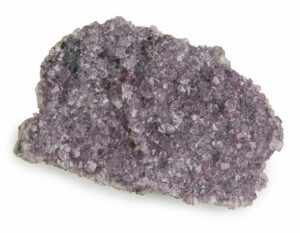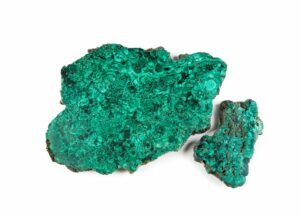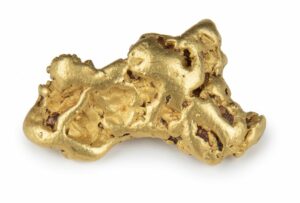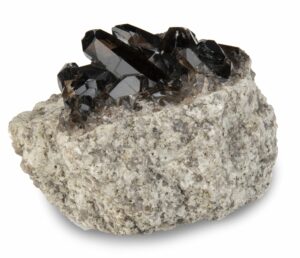Published June 26, 2024
The Troost Collection

The sum of Gerard Troost’s contributions to the scientific community at New Harmony is much greater than the number of years he lived in Indiana.
A prominent geologist of his day, Troost lived in the utopian community for a little more than a year. Now nearly two centuries on, his remarkable mineralogy collection is making its way back to help tell the story of the important scientists who once worked at the New Harmony State Historic Site.
 The Indiana State Museum and Historic Sites recently completed a years-long process to acquire Troost’s collection from the Kentucky Science Center. Curator of Geology Peggy Fisherkeller said it will take several more years for the collections team to catalog and identify the more than 6,500 pieces.
The Indiana State Museum and Historic Sites recently completed a years-long process to acquire Troost’s collection from the Kentucky Science Center. Curator of Geology Peggy Fisherkeller said it will take several more years for the collections team to catalog and identify the more than 6,500 pieces.
“I was really interested in having this collection come to us for a lot of reasons, but especially because of its importance to our interpretation of New Harmony,” said Fisherkeller. “Those scientists who lived and worked in New Harmony did such foundational science, so this collection is another way to help us physically illustrate that.”
 Born in Holland in 1776, Troost studied there initially to become a chemist and pharmacologist in 1801. Later, he moved to Paris where he eventually discovered what would become his life’s passion.
Born in Holland in 1776, Troost studied there initially to become a chemist and pharmacologist in 1801. Later, he moved to Paris where he eventually discovered what would become his life’s passion.
In 1810, Troost moved to Philadelphia where he became the founding president of the Philadelphia Academy of Natural Sciences. He spent more than a decade there teaching mineralogy, conducting important geological studies and growing his impressive collection. That is also where he met geologist William Maclure and industrialist Robert Owen, who convinced Troost to join them in New Harmony in 1825. Troost taught chemistry and mathematics in the community, all the while continuing to collect mineral samples.
“You can tell he was collecting because he had a deep appreciation for it, but he also wanted to have a really full and complete documentation of known minerals at the time,” said Fisherkeller.
 Troost left New Harmony in 1827. By the time of his death in 1850, he had amassed a collection of around 14,000 specimens with meticulous documentation. The collection was sold to what is now the Kentucky Science Center and became a central feature there, but it was inundated by a massive flood of the Ohio River in 1937. Many specimens were lost, and the effects of the flood and age also caused several of Troost’s original identifying labels for the remaining pieces to become mixed up or lost.
Troost left New Harmony in 1827. By the time of his death in 1850, he had amassed a collection of around 14,000 specimens with meticulous documentation. The collection was sold to what is now the Kentucky Science Center and became a central feature there, but it was inundated by a massive flood of the Ohio River in 1937. Many specimens were lost, and the effects of the flood and age also caused several of Troost’s original identifying labels for the remaining pieces to become mixed up or lost.
Troost’s catalogs survived, however, so Fisherkeller is now focused on the process of reidentification, which will allow people to continue learning from Troost’s collection for years to come.
“Some of the best discoveries are when I’m actually able to take a specimen and link it to the catalog,” said Fisherkeller. “There is a lot of detective work that goes into it, and there have been a lot of dead ends, but I love looking at the kind of work they did and trying to understand the process.”









